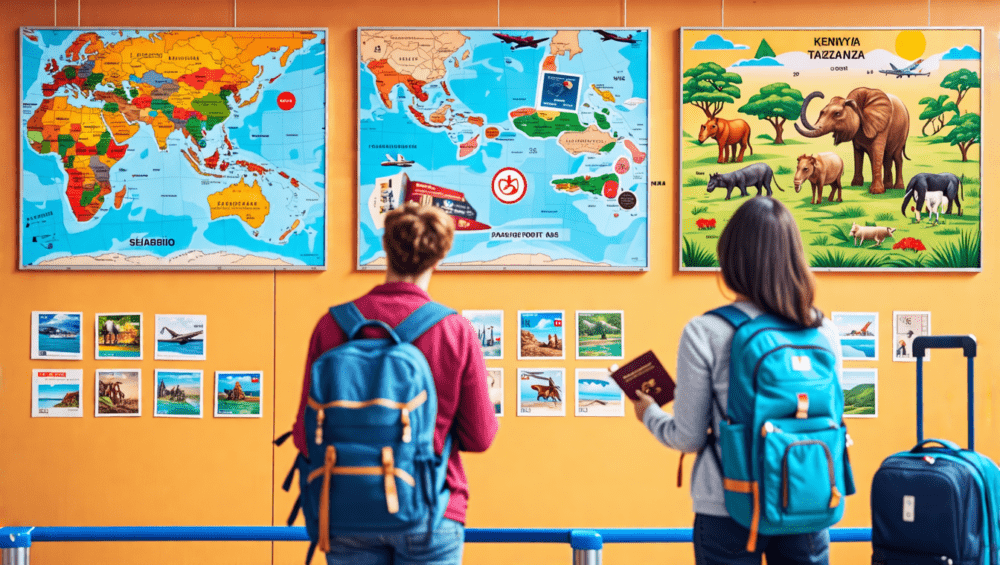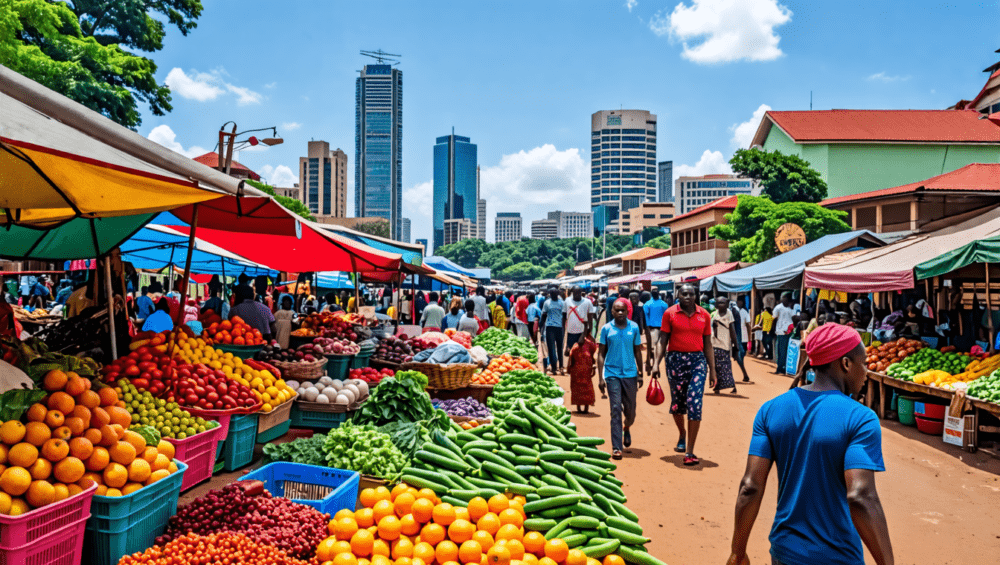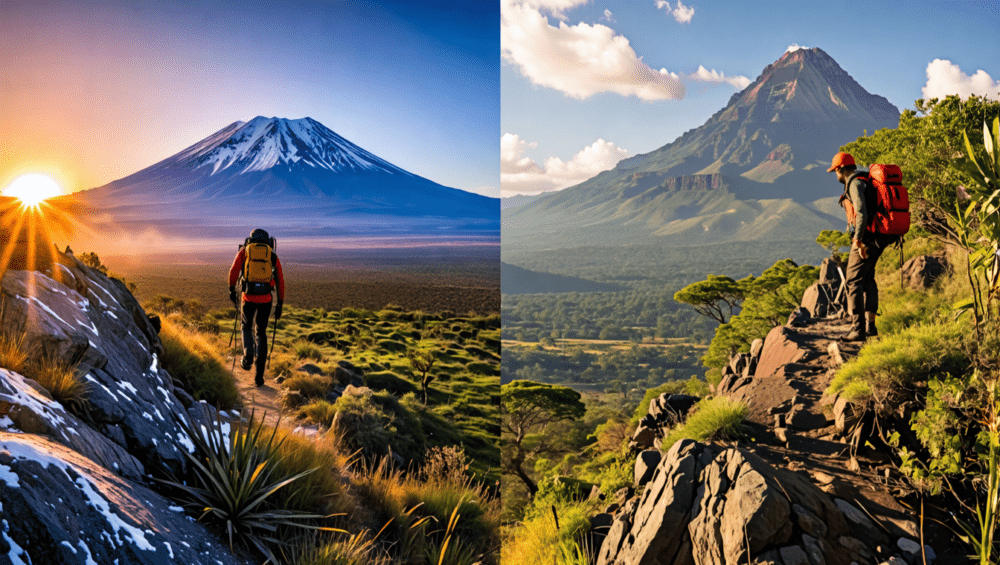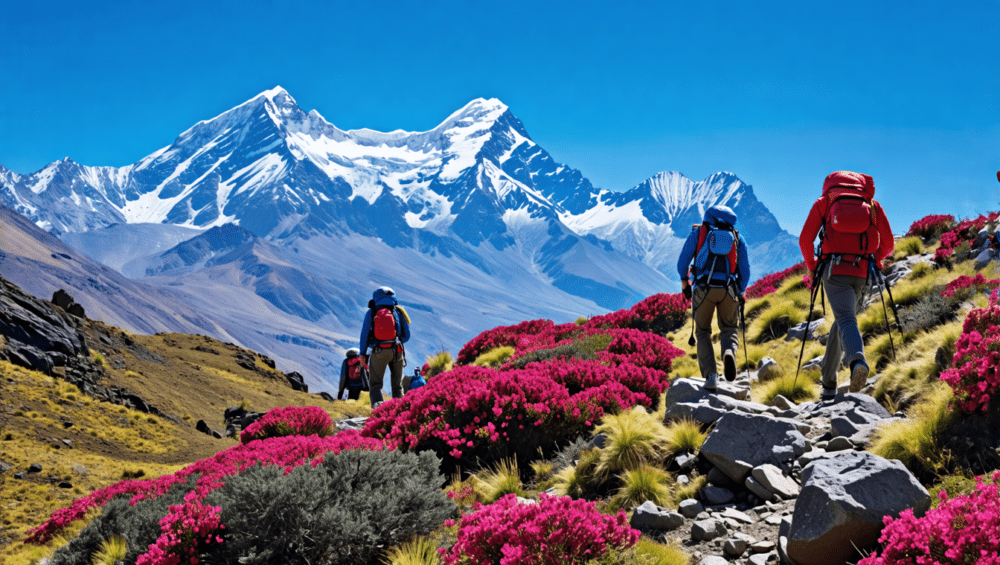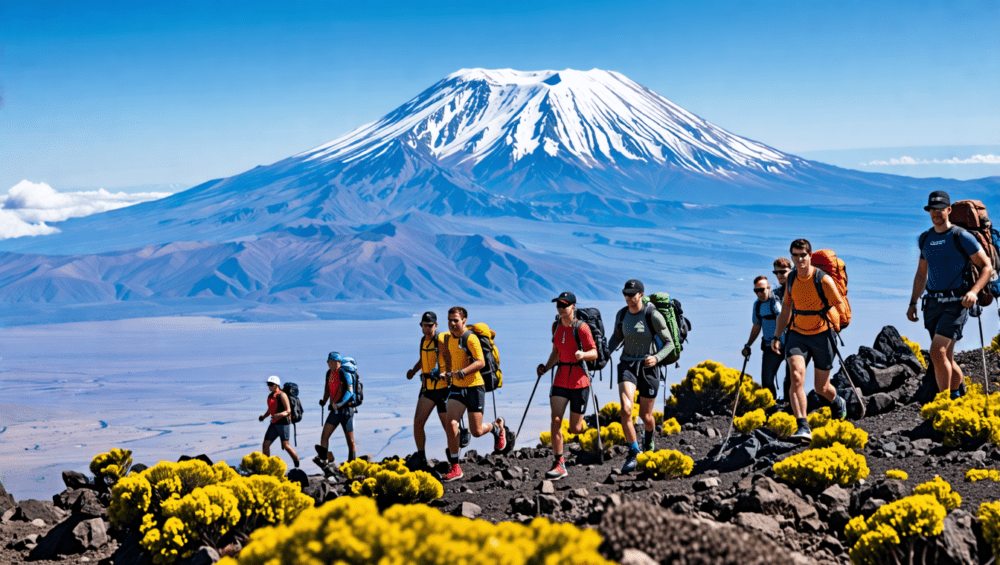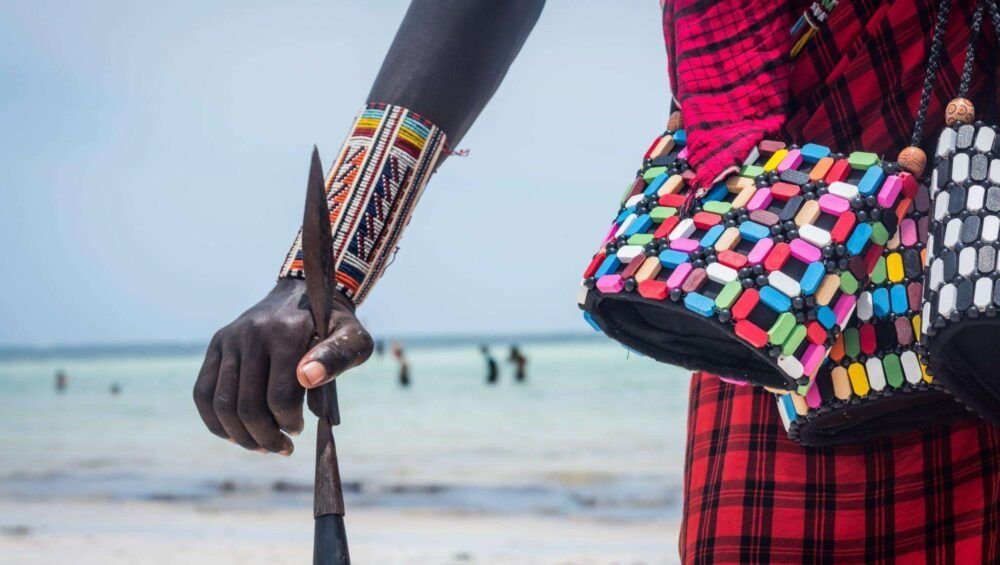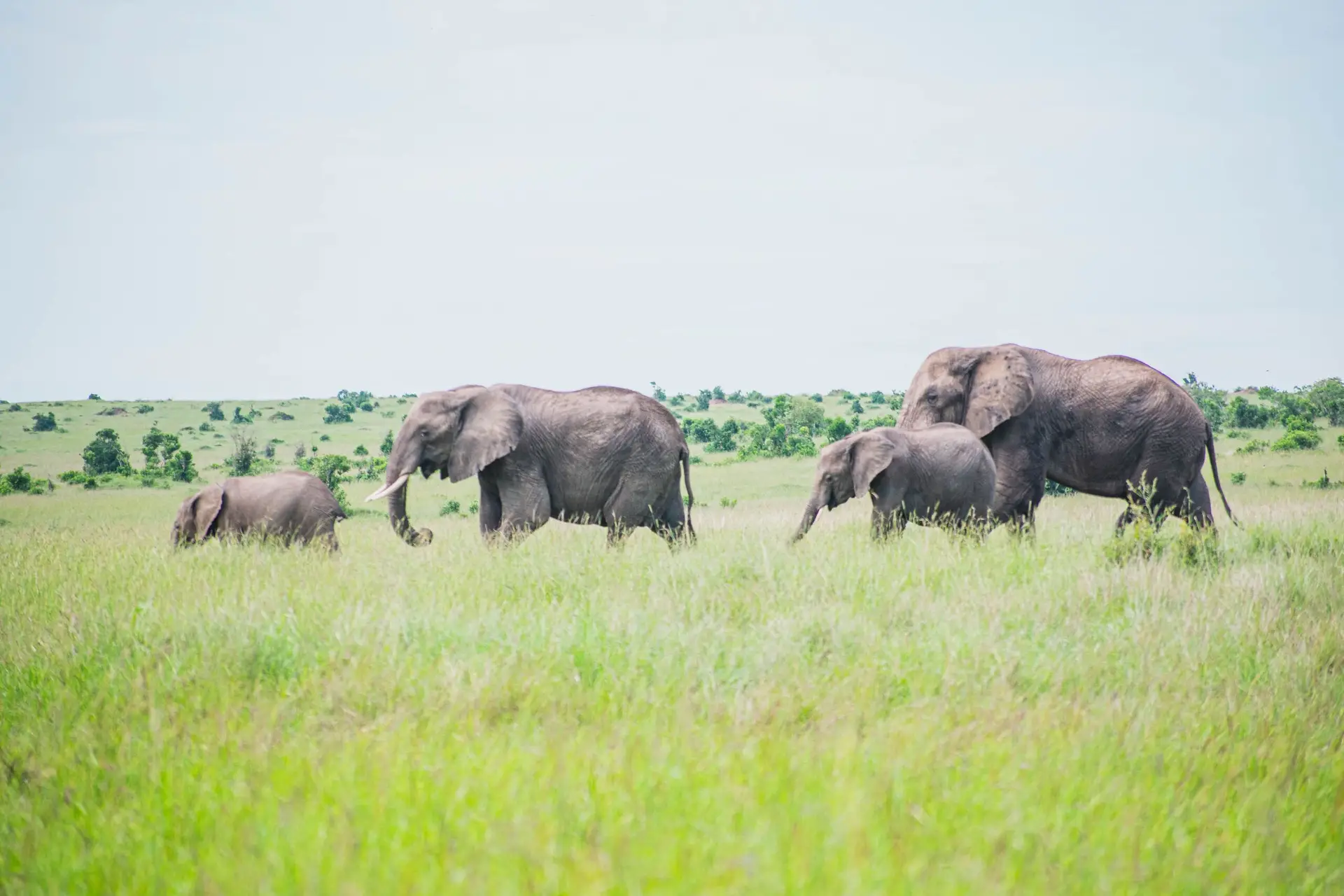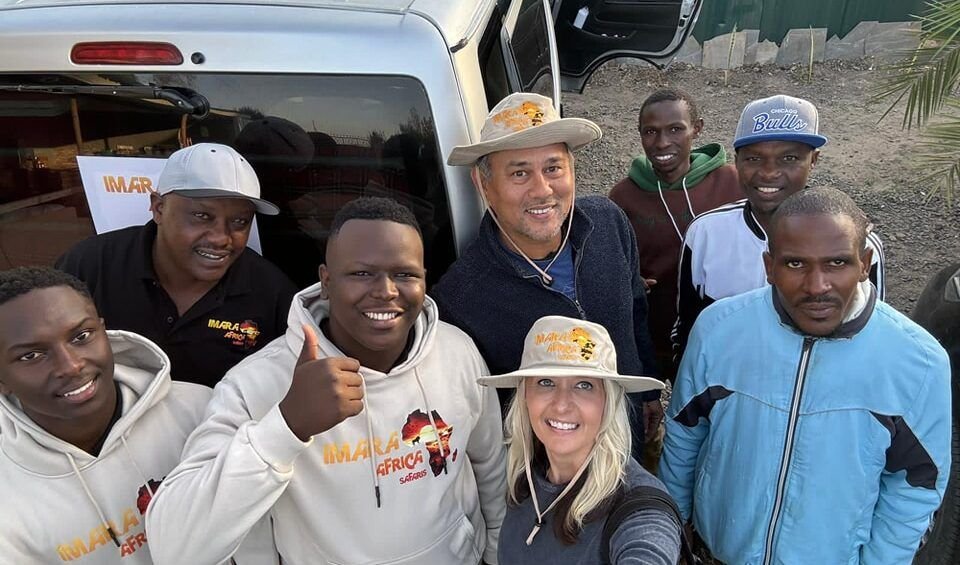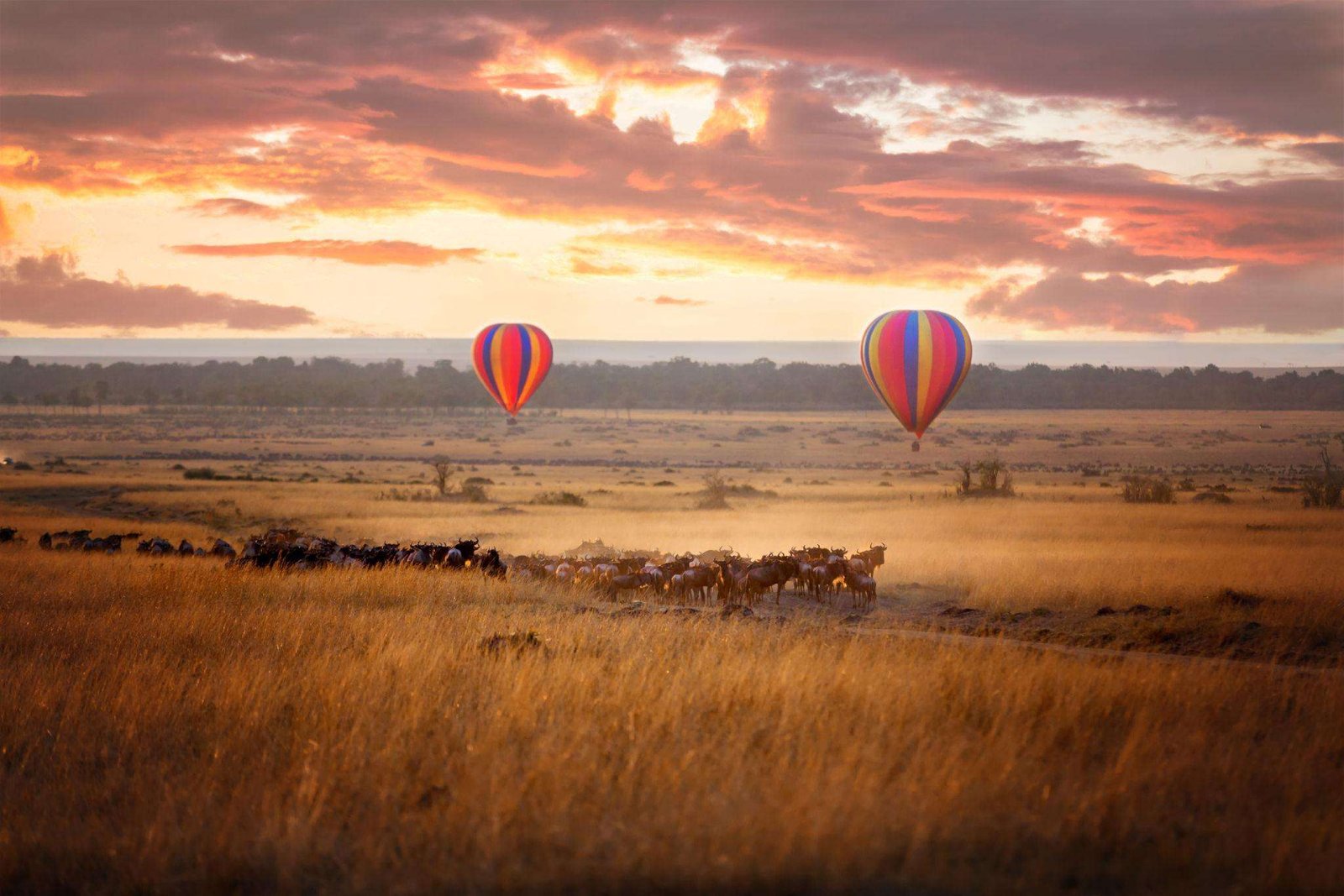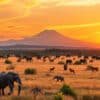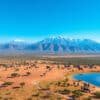Visa requirements for UK and USA passport holders visiting Kenya & Tanzania
Introduction to Visa Requirements for Kenya and Tanzania
Picture this: you’re standing on the edge of the Great Rift Valley, the sun setting behind Mount Kilimanjaro, while a herd of elephants roams peacefully nearby. Dreamy, right? Kenya and Tanzania offer such mesmerizing landscapes and unique wildlife experiences, making them magnets for adventurers from across the globe. But before you pack your bags and hop on a plane, there’s a crucial step you can’t overlook: understanding the visa requirements.
Now, I know what you’re thinking—visa paperwork sounds about as exciting as watching paint dry. But here’s the deal: tackling the visa process head-on ensures your travel plans unfold smoothly without any unwelcome hurdles. Trust me, I’ve been there. Whether you’re a wanderlust-stricken UK resident or a USA citizen with your sights set on the Serengeti, knowing the entry requirements for these destinations is essential. That’s where this article comes in handy.
We’re diving deep into the nitty-gritty of visa requirements for UK and USA passport holders heading to Kenya and Tanzania. So, if you’ve ever wondered what documents you need, how much it’s going to cost, or what to expect along the way, you’re in the right place. Let’s simplify the red tape together, so you can focus on the adventure ahead!
Introduction to Visa Requirements for Kenya and Tanzania
Imagine stepping out into the vast savannahs of Kenya, where the air resonates with the calls of wild animals, and the sun paints a golden glow over the horizon. Or picture yourself on the powdery beaches of Tanzania’s Zanzibar, sipping fresh coconut water under a palm tree. Sounds dreamy, right? Both Kenya and Tanzania are bursting with adventure, wildlife, and breathtaking landscapes, calling out to wanderlust souls from across the globe.
But before you start packing your safari hat and sun lotion, there’s something crucial you need to consider: understanding the visa requirements. Nothing slams the brakes on travel plans faster than getting turned away at the immigration checkpoint. It’s like heading to a party and realizing you left the invite at home—total bummer.
This segment of our guide zeros in on the nitty-gritty of visa requirements, particularly for those holding UK and USA passports. Trust me, navigating visa applications can have more twists than a jungle vine if you’re not informed! But don’t fret, we’re in this together. Let’s dive into what you need to know to ensure a smooth journey into the heart of East Africa’s wonders.

Visa Requirements for UK Passport Holders Visiting Kenya and Tanzania
Visa Application Process for UK Nationals Visiting Kenya
Planning a trip to Kenya? If you hold a UK passport, you’re in luck because the process is fairly straightforward. Kenya offers several types of visas, including the popular tourist visa, which is perfect for those short-term wildlife safaris or beach getaways. So, how do you go about it?
First things first, you have the option to apply online for an e-visa. This digital visa is not only convenient but saves you from the hassle of embassy visits. Simply visit the eCitizen website, the official Kenyan visa application portal. If you’re anything like me, filling out forms can feel like solving a puzzle without the edge pieces. But fear not, the website guides you through each step efficiently. Have your passport and a digital passport-sized photo ready, as well as an itinerary if you have one. Got them? Great, you’re halfway there!
The Kenyan e-visa process typically requires you to upload a scanned copy of your passport’s biodata page. If your passport is expiring soon, consider getting a shiny new one before applying, as Kenya requires it to be valid for at least six months from your date of entry.
Once your application is submitted, you’ll need to pay the visa fee, which is around $51 (about £40 at the time of writing). Mastercard, Visa, or any other major credit card should do the trick. After payment, all you need to do is wait. Processing time is normally about two business days, though it’s wise to apply at least a week in advance to avoid any last-minute panic.
Required Documentation and Application Fees for Kenya Entry
Beyond the application form, ensure you’re set with the following:
- Your passport (valid for at least six months).
- A recent passport-sized photo (in color, please!).
- An onward ticket or proof of return journey.
- Payment for the visa fee (£40 as of now).
Having all what’s needed can make you feel like a travel superhero. Just don’t forget to print the visa once it’s approved, as you’ll need a hard copy when landing in Kenya. Electronic copies, while eco-friendly, might not cut it at the immigration desk.
Visa Requirements and Formalities for UK Passport Holders Traveling to Tanzania
Now, envision yourselves gazing at the majestic Kilimanjaro or exploring the Serengeti. Tanzania calls to travelers with its breathtaking landscapes and wildlife. For UK passport holders, the Tanzanian visa application process shares some similarities with Kenya’s.
UK citizens can apply for a visa online through Tanzania’s official immigration website. The process? Pretty much the same digital dance as Kenya’s. You’ll need a passport valid for at least six months, a passport photo, and a credit/debit card to pay the fee, which stands at around $50 (£38).
If you prefer a more traditional approach or if digital applications give you a headache, you can apply for a visa on arrival at Tanzanian airports. However, keep in mind that this might entail longer wait times, and not everyone enjoys the thrill of a customs queue.
Similarities and Differences in the Visa Application Processes Between Kenya and Tanzania for UK Citizens
Though the processes are similar, there are slight differences worth noting. Both countries offer e-visas, reducing paperwork and time. The primary distinction lies in the processing times and visa-on-arrival availability. Kenya’s e-visa often gets processed faster, while Tanzania gives you the option of getting a visa upon entry.
Let’s not forget the fun part – the fees! They’re almost identical, making budget travel planning less of a guessing game. However, double-check current rates before applying, as they can be subject to change.
As a final piece of advice, always have a backup plan. It’s prudent to carry essential documents like your itinerary, invitation letters, and travel insurance, just in case. Now that you know the ropes, get packing and prepare for an adventure of a lifetime! Isn’t it time you saw these wonders for yourself?

Visa Requirements for USA Passport Holders Visiting Kenya and Tanzania
So, you’ve decided to take that long-awaited safari through the majestic landscapes of Kenya and Tanzania. Gorgeous savannahs, exotic wildlife, and cultures rich in history await. But, wait a minute—are you aware of the visa requirements for USA passport holders to these stunning destinations? If not, buckle up! We’re about to dive into a travel-essential topic that can mean the difference between a smooth entry and an unexpected delay.
Step-by-Step Guide on Acquiring a Kenyan Visa for USA Citizens
First up, Kenya. You can’t just waltz in without the right paperwork, even with all the friendly vibes. For USA passport holders, the Kenyan visa process is relatively straightforward, thanks to modern technology. Before you get overwhelmed, let’s break it down.
The fastest way to get your Kenyan tourist visa is to apply for an electronic visa, popularly known as an eVisa. It’s like ordering pizza online, minus the, you know, cheese and dough. The process begins with a visit to the official eVisa website—Google it, and it’ll pop right up. Once you’re there, you’ll fill out the application form. Keep in mind to double-check your passport details; any mismatch and your journey might hit a bump.
Documents? Oh yes, you’ll need a few. A valid passport (with at least six months’ validity and two blank pages), a recent passport-sized photo, an itinerary of your travel in Kenya, and proof of a return or onward flight. Regarding costs, as of the latest updates, the fee for a single-entry visa to Kenya for USA citizens is around $51, not including any small service or processing charges. Get ready to whip out that credit card!
Exploration of Tanzanian Visa Prerequisites for USA Travelers
Next stop, Tanzania. Whether you’re fascinated by the climbable heights of Kilimanjaro or the captivating turquoise waters of Zanzibar, knowing the visa process ahead of time is crucial. USA citizens have a couple of options when it comes to obtaining a Tanzanian visa.
Firstly, the eVisa, which you can apply for via the official Tanzanian eVisa portal. Does it sound familiar? That’s right, technology at your service again. The process involves filling out an online application, and providing similar documentation as required for Kenya—a valid passport, a passport-sized photograph, and your travel itinerary.
Alternatively, you can also obtain a visa on arrival in Tanzania. Sounds convenient, right? Well, it is, somewhat. You’ll need to queue upon arrival and have $100 ready in cash to cover the visa fee. While this might seem appealing, remember that queues can sometimes be long and slow-moving, especially if you’re landing during peak tourist season.
Comparative Analysis of Visa Processes for the USA in Both Nations
Now, here’s where you might start playing the compare and contrast game. Both Kenya and Tanzania offer eVisas for USA citizens, which is a huge convenience. However, the application times may vary slightly. Generally, it takes about 24 to 48 hours for Kenya, while Tanzania might require you to give it up to two weeks. Yup, patience is your best travel companion here.
If weighing your options between obtaining a visa before departure or on arrival, the online route generally offers peace of mind without the risk of long airport queues. Costs are fairly comparable, with Tanzania being a tad higher if you opt for the visa on arrival. But, hey, it’s all part of the adventure, right?
Ultimately, you’ve got the scoop! While it might seem like a lot to juggle, understanding these visa requirements for Kenya and Tanzania is a small effort for a smooth trip. Isn’t peace of mind worth a bit of early planning? After all, better to sort out the paperwork now than to have a surprise tour of the airport while your holiday waits!

Practical Tips and Resources for a Hassle-Free Visa Application
Ah, the joys of planning a trip! The excitement, the anticipation… and then, oh yes, the dreaded visa application. If you’ve ever found yourself tangled in a web of forms and regulations, you’re not alone. Let me share some practical insights and resources to help UK and USA passport holders glide through the visa process for Kenya and Tanzania like a hot knife through butter.
Opting for Online Visa Applications
First up, let’s talk about the magic of online applications. Do you remember the days of standing in long queues, clutching your precious stack of documents like your life depended on it? Luckily, those days are dwindling, thanks to online visa applications. Both Kenya and Tanzania offer e-visa services, and let me tell you – they’re a game-changer.
For UK and USA travelers, applying for your visa online can save a tonne of time and hassle. Kenyan and Tanzanian e-visas allow you to fill out your application, submit the required documents, and make payments all from the comfort of your couch. Just imagine snacking on your favorite treat while the process takes place right in front of your laptop screen. Blissful, right?
Trustworthy Resources and Official Sites
Now, finding accurate and updated visa information is crucial. Believe me, a friend of mine once used an outdated source and ended up with an incomplete visa application. The result? A panicked visit to the embassy and a delayed departure. Learn from this mishap—rely on official sites!
For Kenya, the official e-visa portal is evisa.go.ke. Tanzanian visas can be tackled at eservices.immigration.go.tz/visa. Bookmark these pages, folks. They’ll be your best travel buddies before you even set foot on African soil. Always verify the latest visa requirements and fees, as policies can shift like sand dunes in the wind.
Avoiding Common Application Mistakes
When it comes to visa applications, it’s often the small things that trip you up. Miss a single letter in your name? It could lead to a whirlwind of confusion. Double, triple-check personal details before hitting the ‘Submit’ button. While you’re at it, ensure your passport is valid for at least six months beyond your date of entry, and has some blank pages too.
Another typical pitfall? Incomplete documentation. Think of it like packing your carry-on—you wouldn’t forget your neck pillow, right? Likewise, don’t forget essential documents, like recent passport-sized photographs, a comprehensive travel itinerary, and proof of sufficient funds. It’s like creating a persuasive personal resume, but for border control.
Staying Updated on Entry Requirements and Travel Advisories
Here’s some closing advice: Keep an eagle eye on travel advisories. Now, we love spontaneity, but when it comes to travel policies, it pays to play it safe. Political climates and entry requirements can change faster than you can say safari, so check in with your government’s travel advisory services regularly before your big trip.
The UK government’s portal (gov.uk/foreign-travel-advice) and the USA’s travel advisory site (travel.state.gov) provide current updates on safety, security, and health conditions for travelers heading to Kenya and Tanzania.
So there you have it. With some digital smarts, a sprinkle of caution, and trusty resources at hand, your journey to Kenya and Tanzania will be off to a smooth, worry-free start. Safe travels, and don’t forget to send a postcard!
Conclusion
So, there you have it—a comprehensive guide on navigating the visa requirements for Kenya and Tanzania as a UK or USA passport holder. It might sound overwhelming at first, but it’s not rocket science! Having been through this process myself, I can assure you that a little preparation goes a long way. When I planned my trip to these breathtaking landscapes, I quickly realized that understanding the visa details was just as important as packing my camera. After all, a misplaced paper or mistaken fee can throw a wrench into those safari dreams.
Whether you’re from the UK or the USA, doing your homework on electronic visa options can save you time—and a headache. Trust me, I once stood in a slow-moving line, wishing I had spent a few minutes online beforehand. Remember, double-checking the documents and fees is key; it’s like proofreading a really important email before hitting send. One missed detail, and you might find yourself in a bit of a bind.
Keep It Simple and Enjoy!
Let’s be honest: Nobody enjoys paperwork. But the promise of seeing the Great Migration in Kenya or the majestic Mount Kilimanjaro in Tanzania should be all the motivation you need to tackle the visa process head-on. Use the available online resources to stay updated on any changes or travel advisories that might pop up. It’s like checking the weather before a road trip; you’d rather be prepared than caught off guard.
As you embark on this journey, remember that it’s more of an adventure than a chore. With these insights at your fingertips, you’re all set to explore these incredible destinations without a hitch. Good luck, safe travels, and don’t forget to pack plenty of sunscreen. You’ll need it!

